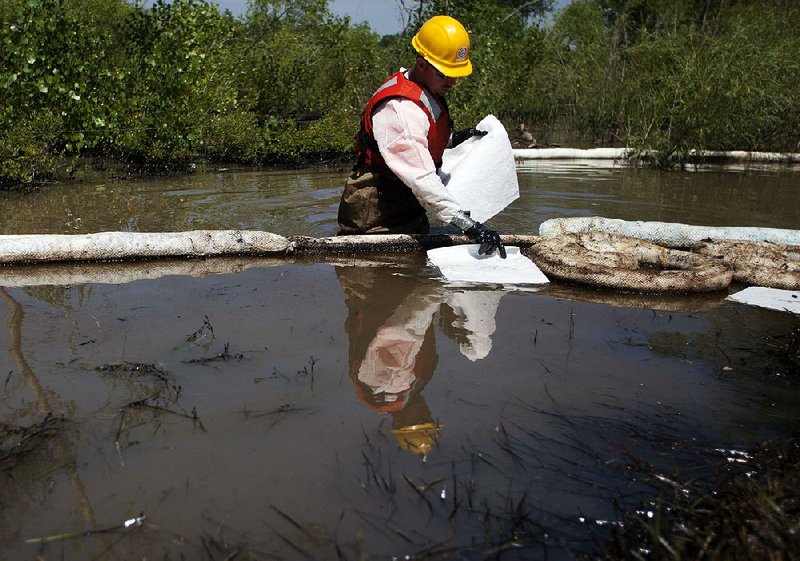BILLINGS, Mont. -- Exxon Mobil Corp. will pay $12 million for environmental damage caused by a pipeline break that spilled 63,000 gallons of crude into Montana's Yellowstone River and prompted a national debate over lax pipeline-safety rules, officials said Wednesday.
The payment settles claims from the U.S. and state governments that the 2011 spill harmed natural resources as it fouled an 85-mile stretch of the famous river that flows through southern Montana.
Court approval is pending.
The pipeline break upstream near the town of Laurel killed fish and wildlife and prompted a monthslong cleanup.
A U.S. Transportation Department investigation found Exxon workers failed to heed warnings that the 20-year-old pipeline was at risk from flooding.
Gov. Steve Bullock, Attorney General Tim Fox and representatives of the U.S. Justice Department announced the deal Wednesday morning at the site of the pipeline break in Laurel.
"Montanans deserve and expect Exxon Mobil Pipeline Company to be held accountable for the damages they caused to Montana's Yellowstone River, our communities and our economy," Bullock said in a statement.
The settlement money would be used for restoration work and to improve recreational access to the waterway, Fox said.
Montana will receive $9.5 million from the settlement, and the federal government will get the remaining $2.5 million.
Exxon has previously said it spent $135 million on cleanup and repairs. Separately, the company has paid $2.6 million to resolve federal safety and state pollution violations.
Penalties against Exxon for federal Clean Water Act violations stemming from the 2011 spill have not yet been levied. An investigation by the Environmental Protection Agency continues, agency spokesman Richard Mylott said.
The accident sparked a national discussion over the adequacy of safety rules for thousands of pipelines crossing beneath rivers, lakes and other waterways. Many of those pipelines were installed decades ago in shallow trenches and can be left exposed when floodwaters scour river bottoms.
In the years since the spill -- and at the urging of safety regulators -- oil and pipeline companies, including Exxon, have reinstalled some lines at greater depths to reduce the risk of accidents.
However, there still are no regulatory mandates for lines to be buried deeply. In January 2015, another shallow pipeline broke and spilled 30,000 gallons farther downstream along the Yellowstone near the town of Glendive.
A consent decree detailing terms of Wednesday's settlement was to be filed in U.S. District Court in Montana. The deal will be finalized pending a 30-day public-comment period and court approval.
The announcement of the settlement came a day after The Wall Street Journal reported that securities regulators are investigating why Exxon Mobil Corp. hasn't written down the value of assets during the plunge in oil prices that started in mid-2014.
The Securities and Exchange Commission also is looking into Exxon's calculations for asset values in an atmosphere of tougher climate-change regulations.
The newspaper cited people familiar with the matter.
Exxon Mobil, based in Irving, Texas, said, "We are fully complying with the SEC request for information and are confident our financial reporting meets all legal and accounting requirements."
The SEC declined to comment.
Business on 09/22/2016
